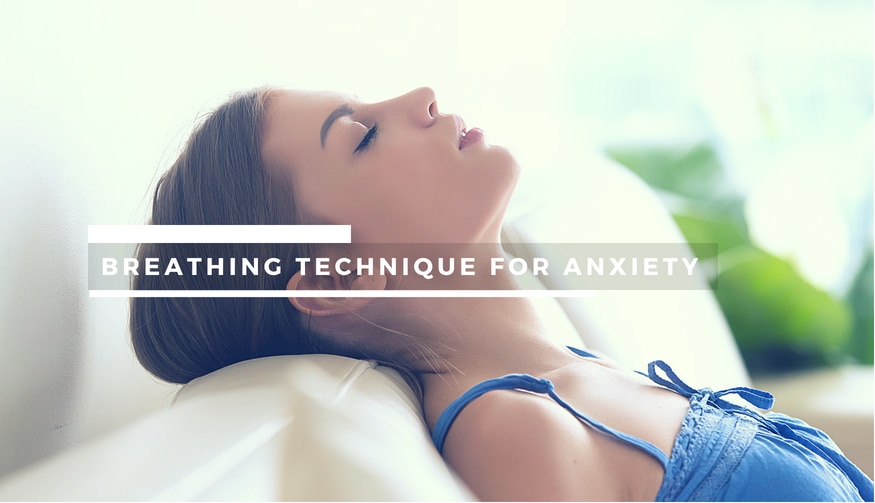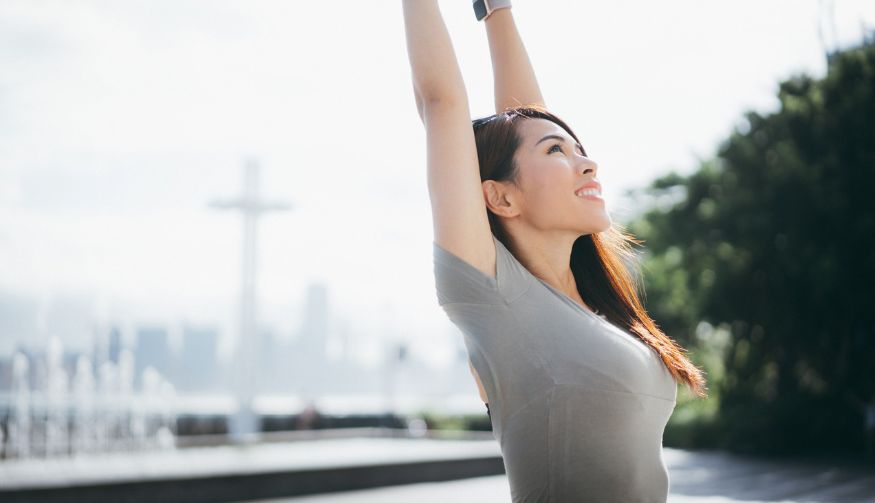Your heart is racing – you can hear it in your ears – and your chest is starting to feel tight. Your legs turn to mush and your brain goes wild – you’re 1,000,000,000% convinced you’re gonna die. Sound familiar? If so, you may be suffering from anxiety, and if anyone tells you it’s melodrama, show them the door. Anxiety is a very real mental health issue, and one that more and more people are suffering with. It’s no surprise, considering so many of us live life at 100mph and rarely take the time to breathe. But actual breathing can really help. In this article, we’re addressing anxiety by giving you three breathing exercises that could help those hateful stressful symptoms.

Slow breathing
If you feel you’re starting to panic, slowing down your breathing and counting can help keep your mind occupied and prevent an all-out anxiety attack. Spoiler? It’s all in the exhale. There’s a reason we sigh when we’re relieved, and it’s because breathing out is neurologically linked to relaxation. Extending your exhale with slow breathing can help put the panic to bed. Here’s how you do it.
- Inhale slowly through your nose and count to six.
- Then spend longer exhaling, and really push the air out of your body. Try doing it for a count of 10, but if that feels uncomfortable, try eight.
- You can adapt the counts to suit what you’re comfortable with – just make sure your exhale is two counts longer than your inhale.

Mindful breathing
Slow breathing can be great, but we’ve all been there where we’re in too deep, and telling yourself to take long, deep breaths feels impossible. An alternative breathing technique is mindful breathing, which can help whether your breaths are fast, shallow, slow or deep. The key to this is the age-old trick of just going with it.
- Focus your attention on whatever pattern of breath you’re experiencing at the time.
- Think only of your breath and allow the anxious thoughts to disappear.
- To help the process, place your hands on your stomach and watch the way they gently rise and fall.
- Keep breathing in through your nose and out through your mouth, focusing your attention on your breath and the movement of your hands, until the anxious thoughts fade away.

Finger breathing
This last technique is for when you’re in busier situations and don’t have the option of sitting quietly by yourself. If you find yourself having anxious thoughts at work, in class or on public transport, here’s what you need to do…
- Hold one hand in front of you and use the index finger of your other hand to start tracing up the outside of your thumb.
- Breathe in as your index finger moves up your thumb, and exhale as you trace down the other side.
- Keep doing this with each finger, breathing in as you go up and out as you go down, until you reach the outside of your pinky.
- Carry on doing this for as long as you need to, tracing your hands as many times as necessary.












